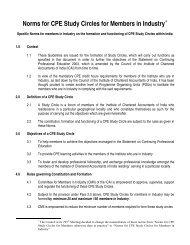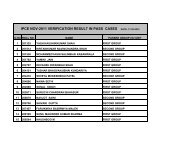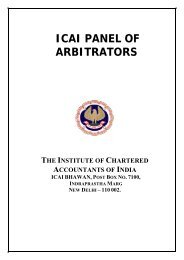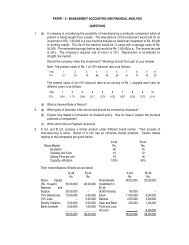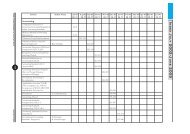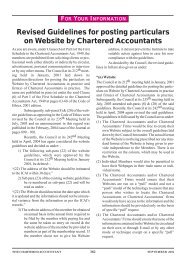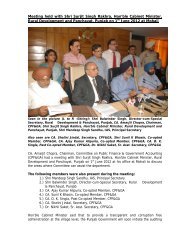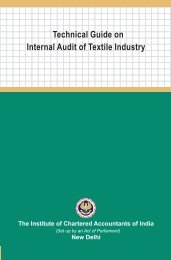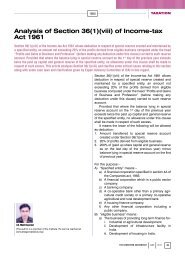(AS) 19
(AS) 19
(AS) 19
You also want an ePaper? Increase the reach of your titles
YUMPU automatically turns print PDFs into web optimized ePapers that Google loves.
374 <strong>AS</strong> <strong>19</strong> (issued 2001)<br />
27. Under a finance lease substantially all the risks and rewards incident to<br />
legal ownership are transferred by the lessor, and thus the lease payment<br />
receivable is treated by the lessor as repayment of principal, i.e.,<br />
net investment in the lease, and finance income to reimburse and reward<br />
the lessor for its investment and services.<br />
28. The recognition of finance income should be based on a pattern<br />
reflecting a constant periodic rate of return on the net investment of the<br />
lessor outstanding in respect of the finance lease.<br />
29. A lessor aims to allocate finance income over the lease term on a<br />
systematic and rational basis. This income allocation is based on a pattern<br />
reflecting a constant periodic return on the net investment of the lessor<br />
outstanding in respect of the finance lease. Lease payments relating to the<br />
accounting period, excluding costs for services, are reduced from both the<br />
principal and the unearned finance income.<br />
30. Estimated unguaranteed residual values used in computing the lessor’s<br />
gross investment in a lease are reviewed regularly. If there has been a<br />
reduction in the estimated unguaranteed residualvalue, the income allocation<br />
over the remaining lease term is revised and any reduction in respect of<br />
amounts already accrued is recognised immediately. An upward adjustment<br />
of the estimated residual value is not made.<br />
31. Initial direct costs, such as commissions and legal fees, are<br />
often incurred by lessors in negotiating and arranging a lease. For finance<br />
leases, these initial direct costs are incurred to produce finance income<br />
and are either recognised immediately in the statement of profit and loss or<br />
allocated against the finance income over the lease term.<br />
32. The manufacturer or dealer lessor should recognise the<br />
transaction of sale in the statement of profit and loss for the period, in<br />
accordance with the policy followed by the enterprise for outright sales.<br />
If artificially low rates of interest are quoted, profit on sale should be<br />
restricted to that which would apply if a commercial rate of interest<br />
were charged. Initial direct costs should be recognised as an expense<br />
in the statement of profit and loss at the inception of the lease.<br />
33. Manufacturers or dealers may offer to customers the choice of either<br />
buying or leasing an asset. A finance lease of an asset by a manufacturer or<br />
dealer lessor gives rise to two types of income:




